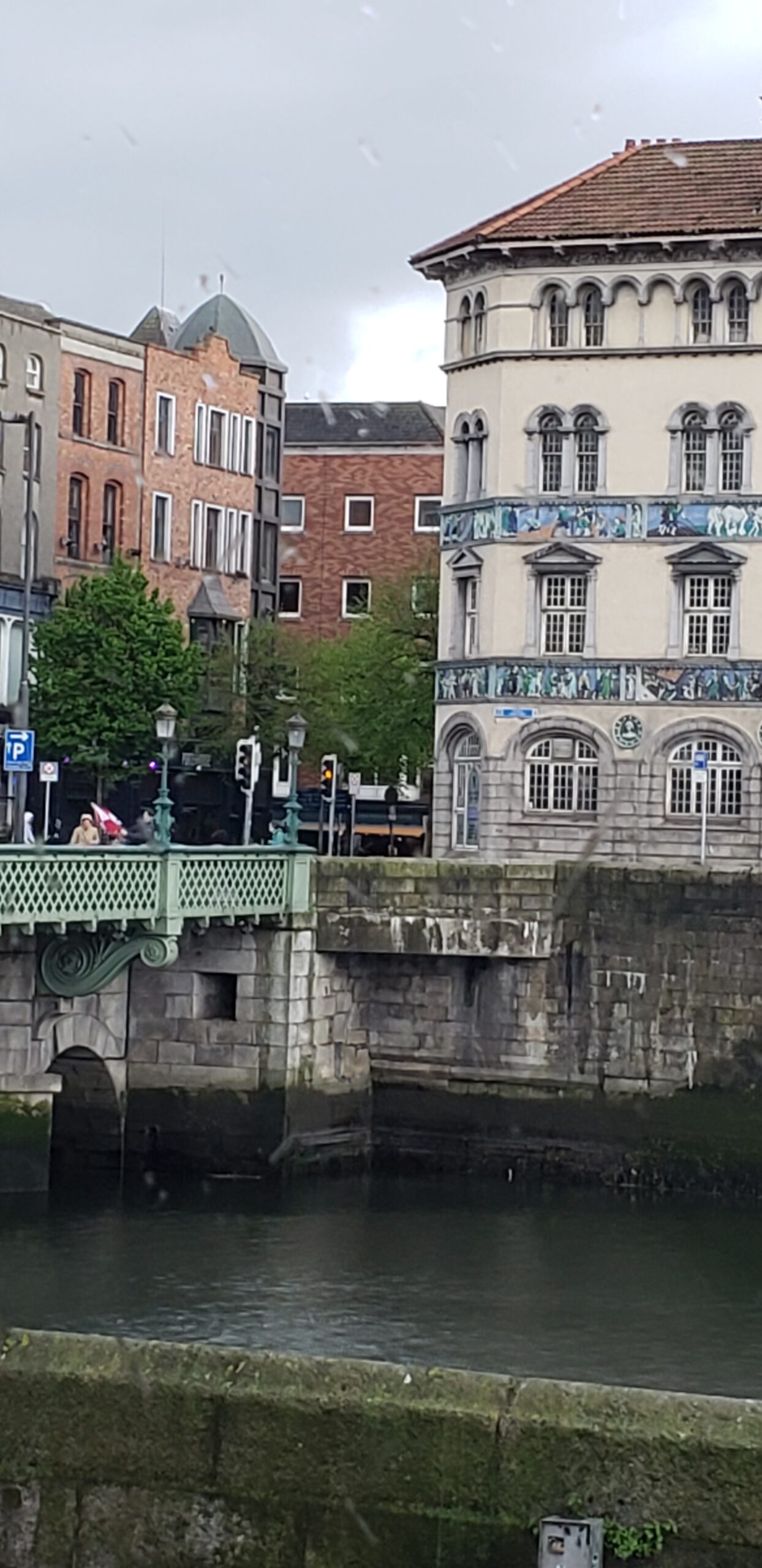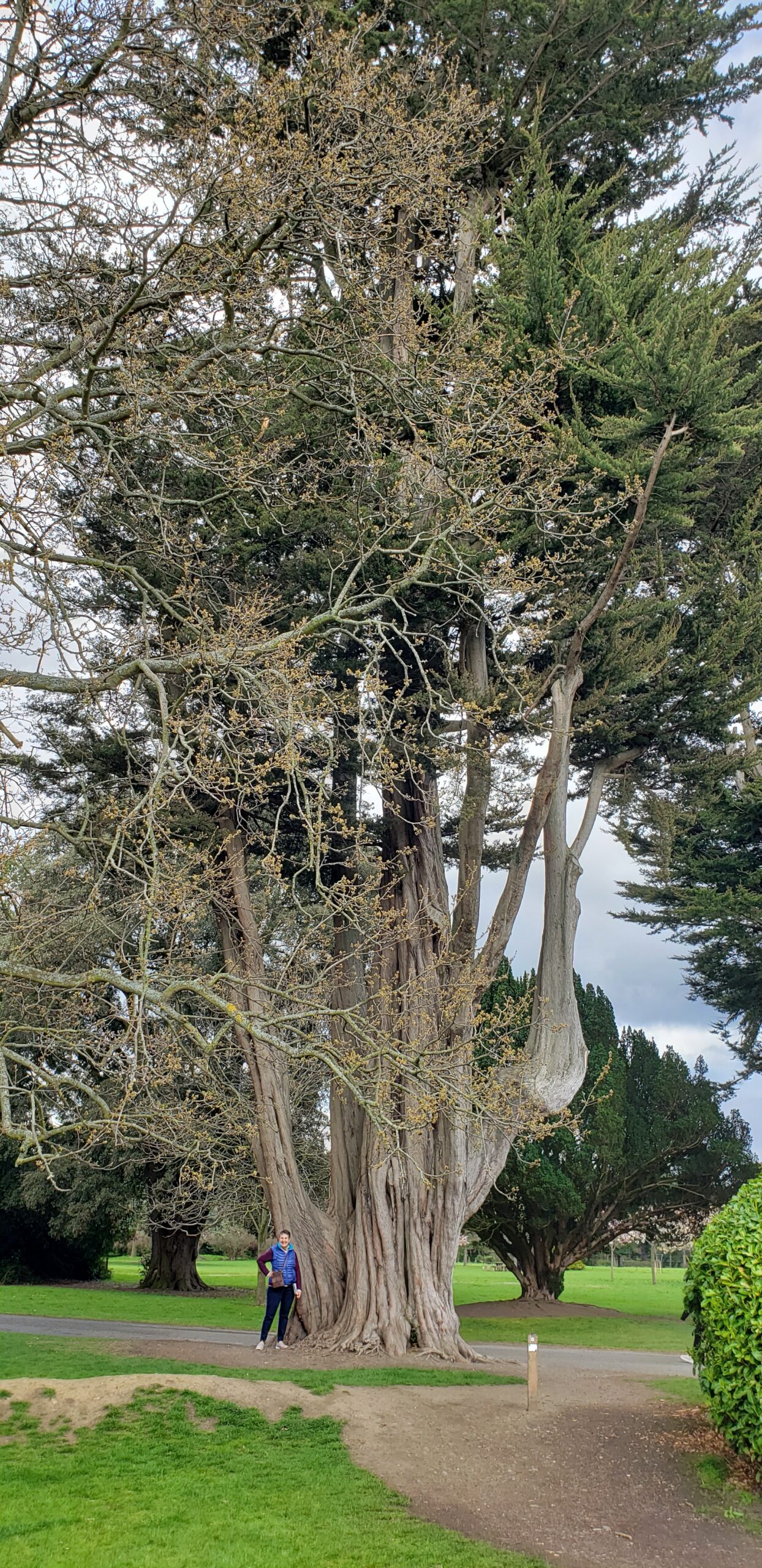Last Updated on September 20, 2022
A happy tour through cheerful Dublin, even on a dreary day.
Traveling through Dublin (Republic of Ireland), I find myself making comparisons with Belfast (Northern Ireland). My overall impression of Dublin is that of a cheerful, friendly city and people – even on this blustery, rainy day. I sense a lightheartedness, an inclination to smile, laugh, tell a joke. Given their long history (800 years) of increasingly oppressive rule under the thumb of the English crown, the Irish in Dublin seem admirably inclined to let bygones be bygones, forgive and forget, move on, release grudges, and even cast some aspects of that historically contentious relationship in entertaining stories. By contrast, Belfast felt somber, serious, regretful, burdened, and still seeking reconciliation within itself over differences that just will not go away.
Similar to every port of call that we visited in the British Isles; Dublin had long ago been settled by…guess who? the Vikings! Those Vikings were everywhere, in and out, back and forth! However, in 1066, during the Battle of Hastings, William the Conqueror (from France) took over as King of England. Bye-bye, Vikings…for the last time.
Our tour bus wends it way through Dublin, and famous places with familiar names prove their reality before our eyes. Here’s Trinity College, established in 1592 by Queen Elizabeth I. It offers undergraduate and postgraduate courses in all major disciplines, but I associate Trinity College with names like Oscar Wilde, Samuel Beckett, James Joyce. I imagine their prose and poetry and plays coming to life in this very place. Here’s St. Patrick’s, founded in 1191 as a Roman Catholic Cathedral. Interesting factoid: The Church of Ireland is indeed Catholic, but it does not recognize the pope’s authority! Here’s the Guinness Brewery. Guinness Stout has been made here at St. James Gate Brewery since 1759, and it will continue to be made here for a very long time to come since the founder, Arthur Guinness, managed to negotiate a 9,000-year lease for the property! Rent = 45 pounds per month (about $55)!
Dublin is built on both sides of the River Liffey which, by the way, is a tidal river that regularly rises and falls. Long ago, to cross from one side to the other, Dubliners would ride ferry boats. Then, in 1816, the Liffey Bridge was constructed, and until 1999, it was Dublin’s only pedestrian bridge across the river. It used to be called the Ha’Penny Bridge since every pedestrian was charged half a penny. (Say “hay-penny.”) Today, many foot bridges cross the River Liffey.

Bridge Across the River Liffey
And here comes row upon row of Dublin’s Georgian houses, block after block of them, all parallel and perpendicular to each other. During the reigns of the first four King Georges, from 1714 to 1830, these big, stately “townhouses,” 3 to 5 stories tall, were built exclusively for wealthy Dubliners (read British and their ilk). Coal was delivered to the basement of each house via a sidewalk chute. Our attention was drawn to the unusually small circumference of the grate covering one such chute. It is a striking example of the British devotion to keeping the Irish in a perpetual state of poverty. Not even a child could have fit in the chute to steal a lump of coal.
These Georgian houses surround beautiful huge parks, which at first were private but are now public. We visited one named Phoenix Park, established in 1662 on behalf of King Charles II of England. It covers a whopping 1,752 acres, 500 of which are wooded, and is home to about 450 deer. It also contains, among other things, a few fabulous residences for people in powerful positions, a hospital, a zoo, gardens, lakes, a variety of mammals and birds and trees, and the tallest obelisk in Europe.
To clear up any confusion regarding Irish names, here’s the definitive answer from our well-informed tour guide. Mac = son of. O’ = grandson of. And Mc = an abbreviation of Mac. Also, to clear up any confusion about the official symbol of the Republic of Ireland, it’s not the shamrock. It’s a harp!
I close with this wonderful Irish wish: “May you be in heaven half an hour before the devil knows you’re dead.”
Julie Helms

Phoenix Park, Dublin
Big Tree, Little Me
